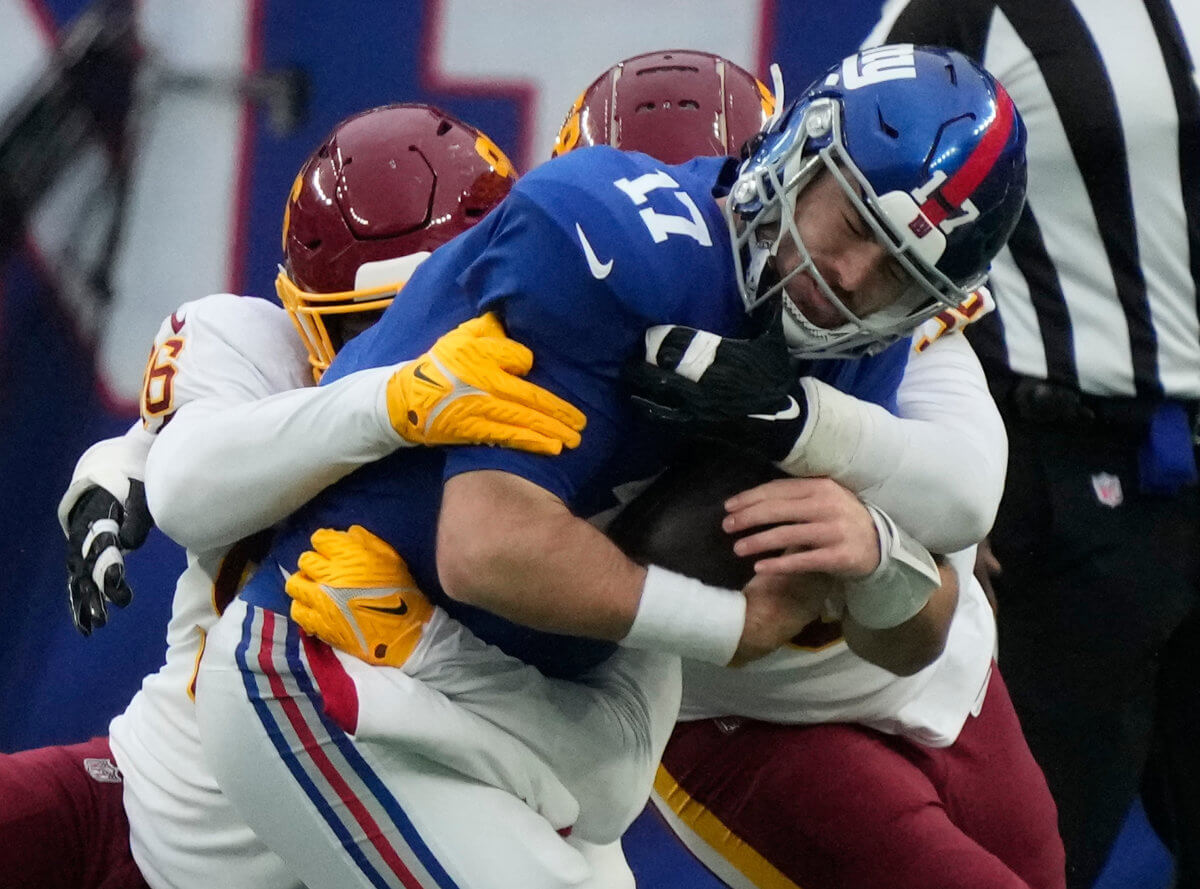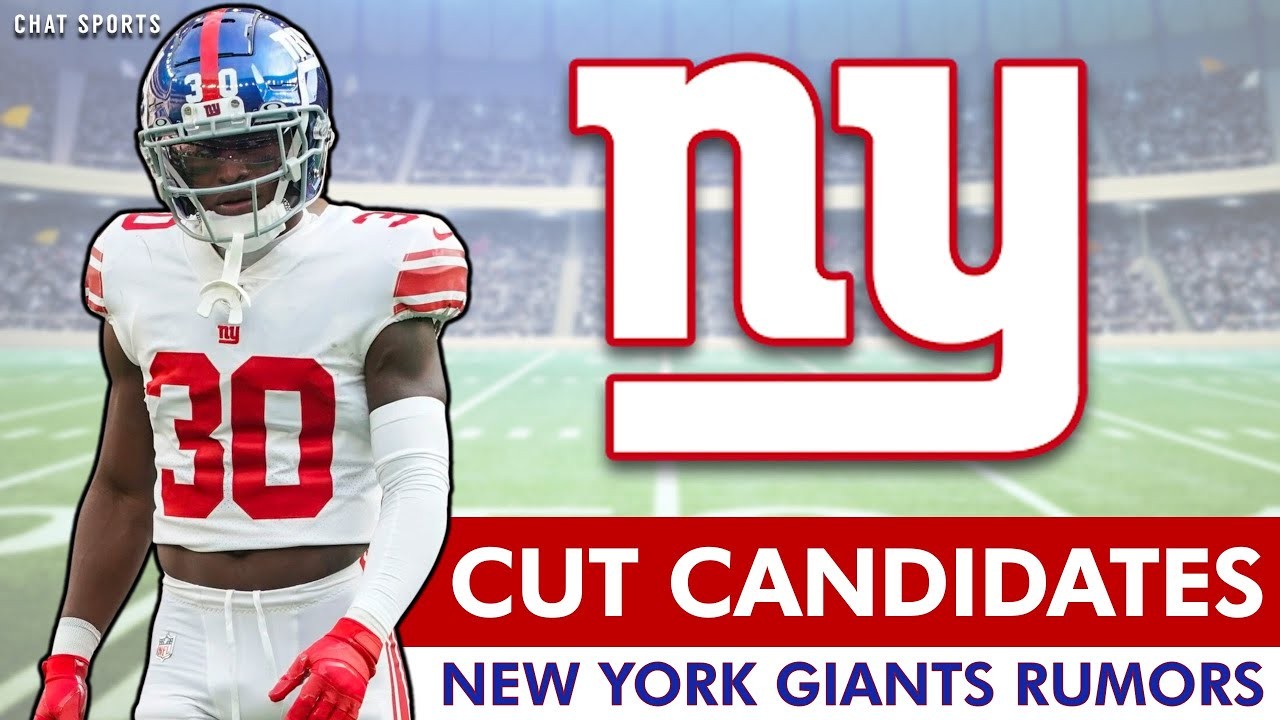Essential Guide To Breaking Down The Giants Cap Space: What You Need To Know
The financial landscape of any sports team is crucial to understanding its potential for success, and the New York Giants are no exception. With the intricacies involved in the National Football League's (NFL) salary cap, it can be a daunting task to comprehend. The Giants' cap space is an essential factor that influences their ability to acquire and retain talent. Understanding how this works provides fans and stakeholders with insights into the team's strategic decisions.
The salary cap, essentially a limit on the amount a team can spend on player salaries, is a fundamental aspect of maintaining competitive balance within the league. For the Giants, managing this cap space is not just about compliance but also strategic planning to build a championship-caliber team. Analyzing the Giants' cap space involves looking at current contracts, potential adjustments, and how these factors influence future acquisitions.
In this comprehensive guide, we'll delve deep into the Giants' cap space. We'll explore what it entails, how it affects the team's operations, and the strategies they might employ to optimize their financial capabilities. Whether you're a die-hard fan, a sports analyst, or someone interested in the business side of football, this article will provide you with all the necessary information to understand what breaking down the Giants cap space means and why it's pivotal to the team's success.
Read also:All About Sebastiaacuten Carvajals Wife A Comprehensive Insight
Table of Contents
- Biography of the New York Giants
- What is Cap Space?
- Current Cap Space Status
- How Do the Giants Manage Their Cap Space?
- How Does Cap Space Affect Player Acquisition?
- Understanding Player Contracts and Their Impact
- Future Considerations for the Giants' Cap Space
- What Role Does Free Agency Play?
- Trade Implications and Cap Space
- How Do Rookie Contracts Influence Cap Space?
- The Role of Salary Restructuring
- Compliance with NFL Cap Rules
- Common Misconceptions About Cap Space
- Frequently Asked Questions
- Conclusion
Biography of the New York Giants
The New York Giants, a storied franchise in the National Football League, were established in 1925. They are based in East Rutherford, New Jersey, and play their home games at MetLife Stadium. The Giants have a rich history, with multiple Super Bowl victories and a dedicated fan base. Known for their resilience and strategic gameplay, the Giants have consistently been a competitive force in the league.
The team's success over the years can be attributed to its strong leadership and management, which have played a pivotal role in navigating the complexities of the NFL, including the ever-changing landscape of cap space management.
Personal Details
| Founded | 1925 |
|---|---|
| Location | East Rutherford, New Jersey |
| Stadium | MetLife Stadium |
| Super Bowl Titles | 4 (XXI, XXV, XLII, XLVI) |
| Owner | John Mara and Steve Tisch |
What is Cap Space?
Cap space is the amount of money a team has available under the salary cap to sign and retain players. The NFL salary cap is a hard cap, meaning teams cannot exceed it under any circumstances. Each year, the salary cap is determined by the NFL based on the league's revenue, and teams must manage their finances accordingly.
Cap space is crucial because it determines a team's ability to make moves during the regular season and off-season. It affects everything from signing new players to extending contracts of existing team members, impacting the overall competitiveness of the team.
Current Cap Space Status
As of the latest league year, the Giants have been actively managing their cap to ensure they remain competitive. The current cap space status reflects the team's recent signings, releases, and contract extensions. Understanding the present state of the Giants' cap space helps in analyzing their potential moves in the upcoming seasons.
Factors like dead money, which is the cap space taken up by players no longer on the roster, and bonuses can significantly impact the current cap space status. The Giants' ability to navigate these elements is crucial for their financial health and strategic planning.
Read also:Benefits And Usage Guide For Vitamin C Serum Your Skins Best Friend
How Do the Giants Manage Their Cap Space?
Managing cap space involves a delicate balance between immediate needs and future planning. The Giants employ various strategies to ensure their cap space is optimized for both short-term success and long-term sustainability. These strategies include:
- Restructuring contracts to convert base salary into signing bonuses, spreading the cap hit over several years.
- Extending contracts of key players to lock in talent while managing cap hits.
- Releasing or trading players to free up cap space when necessary.
- Utilizing void years in contracts to spread cap hits over additional years, although this can lead to future cap challenges.
Each of these strategies has its pros and cons, and the Giants must weigh these carefully to maintain a competitive edge.
How Does Cap Space Affect Player Acquisition?
Cap space plays a critical role in a team's ability to acquire new talent. With limited financial resources, the Giants must prioritize which players to target based on their needs and the available cap space. A well-managed cap allows the Giants to be aggressive in free agency and the trade market.
However, if cap space is tight, the team might have to make difficult decisions, such as letting go of key players or restructuring contracts to create room for new acquisitions. The Giants' success in acquiring talent is often directly linked to how effectively they manage their cap space.
Understanding Player Contracts and Their Impact
Player contracts in the NFL are complex and can have significant implications for a team's cap space. These contracts typically include a base salary, signing bonus, and performance incentives. Each component impacts the cap differently, with signing bonuses often spread over the contract's length for cap purposes.
Understanding these structures helps in predicting future cap hits and planning accordingly. The Giants have to strategically navigate these contracts to ensure they maximize their financial flexibility while securing top talent.
Future Considerations for the Giants' Cap Space
Looking ahead, the Giants must consider various factors that will influence their cap space in the coming years. These include:
- Expected increases in the salary cap due to league revenue growth.
- The expiration of current contracts and the potential need for renegotiations.
- Upcoming draft picks and their contractual obligations.
- Long-term planning for marquee players who will demand significant salaries.
By anticipating these factors, the Giants can better prepare for future financial challenges and opportunities.
What Role Does Free Agency Play?
Free agency is a critical period for the Giants, offering the opportunity to bolster their roster with experienced players. Effective cap space management allows the Giants to be competitive in the free agency market, targeting players who can make an immediate impact.
The Giants must balance the desire to acquire top talent with the need to maintain financial flexibility. This often involves making tough decisions about which free agents to pursue and how much to invest in them.
Trade Implications and Cap Space
Trades are another crucial aspect of managing cap space. They allow the Giants to acquire players while offloading existing contracts to create cap room. However, trades must be carefully considered to ensure they align with the team's financial goals and strategic needs.
The Giants' ability to execute successful trades often depends on their current cap situation and their willingness to take on new contracts or offload existing ones.
How Do Rookie Contracts Influence Cap Space?
Rookie contracts, governed by the NFL's rookie wage scale, are generally more affordable than veteran contracts. This makes them an attractive option for teams looking to maximize value under the salary cap.
For the Giants, drafting well and signing rookies to team-friendly deals can provide significant cap relief and allow for more flexibility in other areas of the roster.
The Role of Salary Restructuring
Salary restructuring is a common practice used to manage cap space. It involves altering the terms of a player's contract to reduce their current cap hit, often by converting salary into bonuses.
While restructuring can provide immediate cap relief, it can lead to future cap challenges if not managed carefully. The Giants must strategically use restructuring to balance short-term needs with long-term financial health.
Compliance with NFL Cap Rules
Compliance with the NFL's salary cap rules is non-negotiable. The league imposes strict penalties for teams that violate these regulations, including fines and loss of draft picks.
The Giants must ensure they are fully compliant with all cap rules while still pursuing their strategic goals. This requires a keen understanding of the cap's intricacies and diligent management of their financial resources.
Common Misconceptions About Cap Space
There are several misconceptions about how cap space works. One common misunderstanding is that having more cap space automatically leads to success. While cap space is important, it is just one factor in building a competitive team.
Other misconceptions include the belief that restructuring contracts is always beneficial or that dead money can be easily managed. In reality, each of these elements requires careful consideration and strategic planning.
Frequently Asked Questions
1. What happens if a team exceeds the salary cap?
Exceeding the salary cap is prohibited in the NFL. Teams that do so face significant penalties, including fines, forfeiture of draft picks, and other disciplinary actions. The Giants, like all teams, must carefully manage their cap to avoid such consequences.
2. How is the NFL salary cap determined each year?
The NFL salary cap is determined based on the league's projected revenue, which includes income from television deals, ticket sales, and other sources. The cap is typically announced before the start of the league year, allowing teams to plan their finances accordingly.
3. Can teams carry over unused cap space to the next year?
Yes, NFL teams can carry over unused cap space to the next league year. This allows teams to bank cap space for future use, providing additional flexibility in managing their finances.
4. What is "dead money" in the context of cap space?
Dead money refers to cap space taken up by players no longer on a team's roster, typically due to released or traded players whose bonuses or guarantees still count against the cap. Managing dead money is crucial for maintaining cap flexibility.
5. How do performance incentives affect cap space?
Performance incentives are bonuses players can earn based on achieving certain milestones. Some incentives are classified as "likely to be earned" (LTBE) and count against the cap, while "not likely to be earned" (NLTBE) do not count initially but can impact future cap space if achieved.
6. Why do teams restructure player contracts?
Teams restructure contracts to create immediate cap space. This is done by converting a portion of a player's salary into a signing bonus, spreading the cap hit over the remaining years of the contract. However, this can lead to larger cap hits in future years.
Conclusion
Understanding the intricacies of the Giants' cap space is essential for anyone interested in the strategic side of football. From managing player contracts to making informed decisions in free agency and trades, cap space plays a pivotal role in the team's ability to compete.
By breaking down the Giants cap space, we gain insight into the challenges and opportunities the team faces. With careful planning and strategic management, the Giants can navigate the complexities of the salary cap to build a successful and sustainable franchise.
For further reading on NFL salary cap management, consider exploring resources offered by the NFL Operations website.
Article Recommendations

